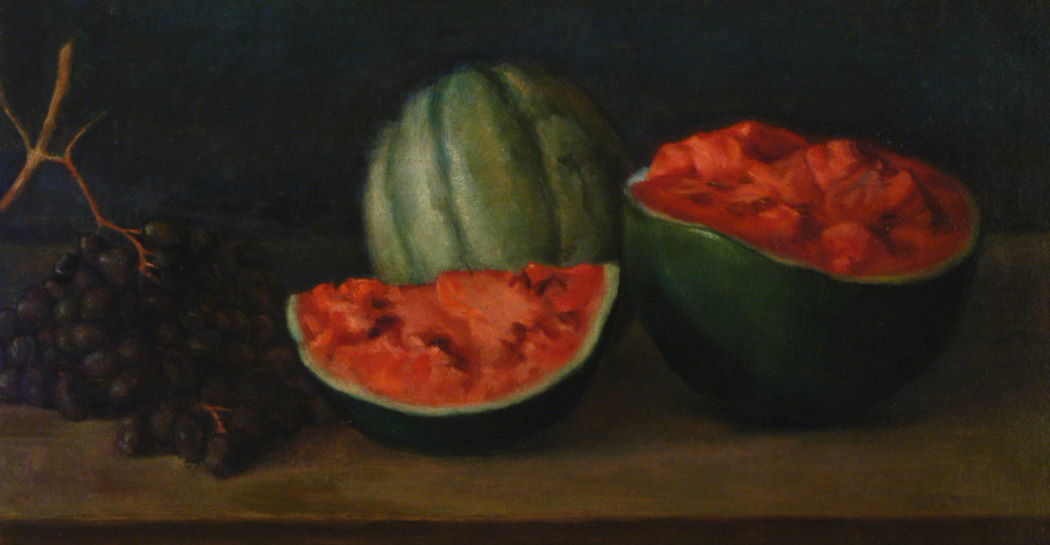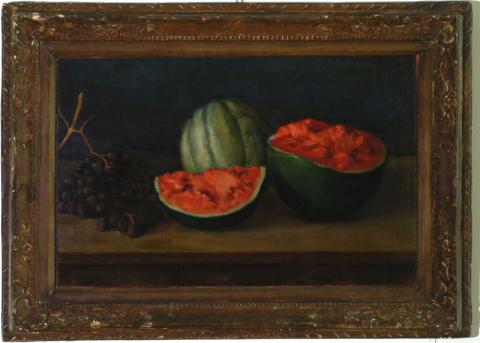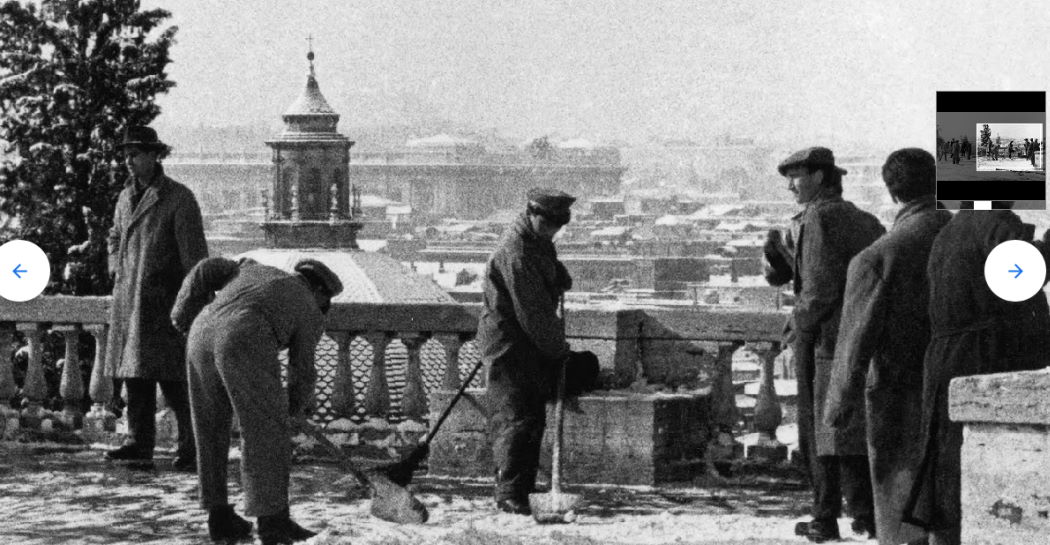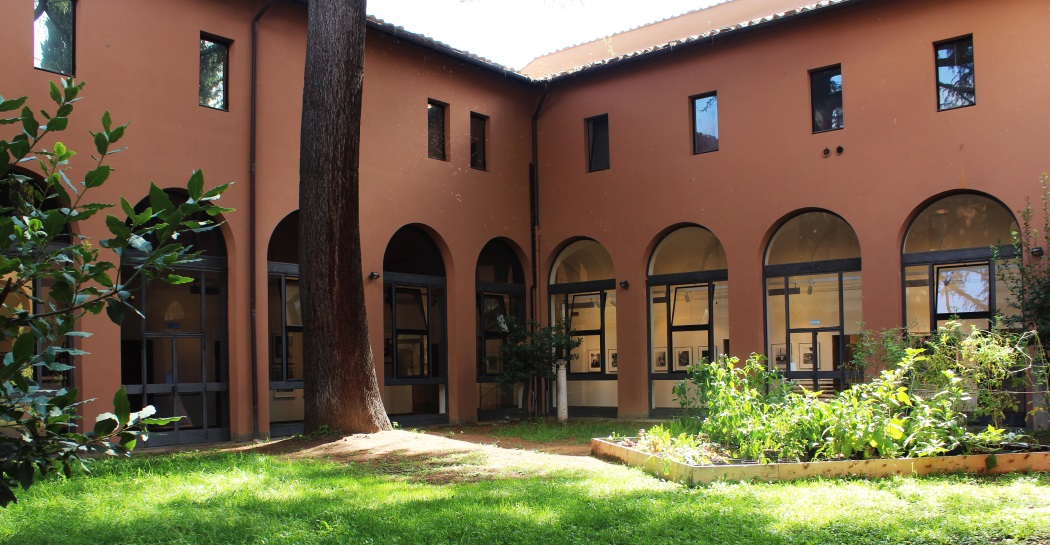The Artwork of the Month - August 2023
August 2022
Carlo Socrate (Mezzana Bigli, 1889 - Roma, 1967)
Natura morta con cocomero, 1946
Oil on panel, 57x78 cm
Inv. MSRo 27

"[... ] his painting, more than that of any other artist, was closely linked to a particular and precise idea of painting, a Longinian idea I would say, and to particular ideal models, let us say Caravaggesque-Courbettian, or Velazquezian-Manettian; ideas and models that found a very precise place in the vocal debate of those years, in that sort of wind of words that formed every evening in the cyclonic area of the Third Room, swirling around Cardarelli's finger, taking the Corso in a whirlwind and passing Piazza del Popolo, hitting Villa Strohl-Fern in full and then spreading to various addresses to return punctually the next evening to the Aragno and reforming, with the regularity of the Monsoons. " With these words, art historian Giuliano Briganti (in 'Carlo Socrate', Rome 1988, exhibition catalogue, edited by M. Quesada, Rome 1988) describes Carlo Socrate's painting and the effervescent Roman climate in which he was formed and distinguished as an artist.
In Natura morta con cocomero (Still life with watermelon) we see expressed his conception of painting, inspired by Caravaggio, Courbet and Cézanne: two watermelons are placed in the foreground and the red flesh of the open one contrasts effectively with the surrounding dark tones, including the blackness of the bunch of grapes on the left. The painting was executed in the very early post-war period, during the artist's absence from the exhibition scene, as he did not participate in any exhibitions between 1945 and 1952, although he continued to paint. It therefore bears witness to the years of Socrates' artistic maturity, a period in which, according to Briganti, "[...] he perhaps no longer found, so I think, the right measure of that way of marrying the antique to the 'vie moderne' in the climate of a polite and sensitive naturalism." There are clear references to the still life tradition, in particular that of the 17th century, a genre very much present in his artistic production.
Socrate was initially very close to the Impressionist modes of Armando Spadini and inspired by Cézanne, but he moved away from them to concentrate on a firm formal approach to the representation of nature, joining the Valori Plastici group. During this phase he was involved in the climate of the 'return to order', choosing models such as Caravaggio, Tiziano, Ingres and Courbet in contrast to the avant-garde of the time. As a collaborator on the set designs for Diaghilev's Balli Russi at the Teatro Costanzi, he met Picasso in Rome in 1917 and followed him to Paris, where he helped him create the curtain and sets for the show Parade. He later visited Madrid, Barcelona and the Prado together with the Spanish artist, also getting to know the painting of Diego Velázquez.
Carlo Socrate was born in Mezzana Biglia, Apulia, in 1889. His parents, actors by profession, moved to Argentina when their son was nine years old. He returned to Italy in 1911: he studied under Giovanni Costetti and two years later exhibited at the Society of Fine Arts in Florence. In 1914 he moved to Rome, where he later took a studio at Villa Strohl-Fern. In the 1920s, his works met with critical success and Roberto Longhi dedicated the volume 'Storia di Carlo Socrate' to him. In the course of his artistic career, he participated in numerous exhibitions, including the Roman Biennial and Quadrennial Exhibitions and, together with the Valori Plastici group, the Florentine Spring Exhibition. The beginning of the post-World War II period was marked by a pause, but he resumed exhibiting with the 1952 Venice Biennale. He died in Rome in 1967, the year after his appointment as a member of the Accademia di San Luca.
Back to the section > The Artwork of the Month of The Museo della Scuola Romana







































